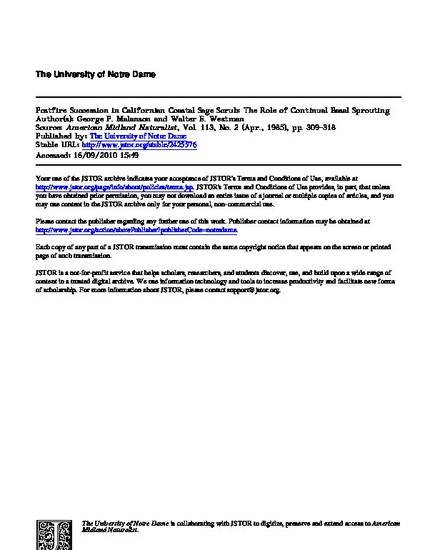
Article
Post-Fire Succession in Californian Coastal Sage Scrub: the Role of Continual Basal Sprouting.
American Midland Naturalist
Document Type
Article
Peer Reviewed
1
Publication Date
1-1-1985
DOI of Published Version
10.2307/2425576
Abstract
Dominant shrub species of coastal sage scrub in coastal southern Cali- fornia are able to produce shoots from their base on a continual basis in the absence of fire or other major defoliation. As a result, each shrub becomes a population of mixed-aged branches (ramets) and extends its duration in the canopy beyond the age of any of its above-ground phytomass, reduces the incidence of senescence, and per- mits an individual (genet) to survive during long fire-free intervals. A computer sim- ulation of succession in coastal sage scrub under differing fire intervals shows that continual basal sprouting may be significant in influencing the long-term composition of the vegetation.
Journal Article Version
Version of Record
Published Article/Book Citation
American Midland Naturlist, 113 (1985), pp. 309-318. doi:10.2307/2425576
Rights
Copyright © American Midland Naturalist, 1985. Posted by permission of the publisher.
Disciplines
Citation Information
George P. Malanson and W. E. Westman. "Post-Fire Succession in Californian Coastal Sage Scrub: the Role of Continual Basal Sprouting." American Midland Naturalist Vol. 113 (1985) p. 309 - 318 ISSN: 0003-0031 Available at: http://works.bepress.com/george_malanson/87/